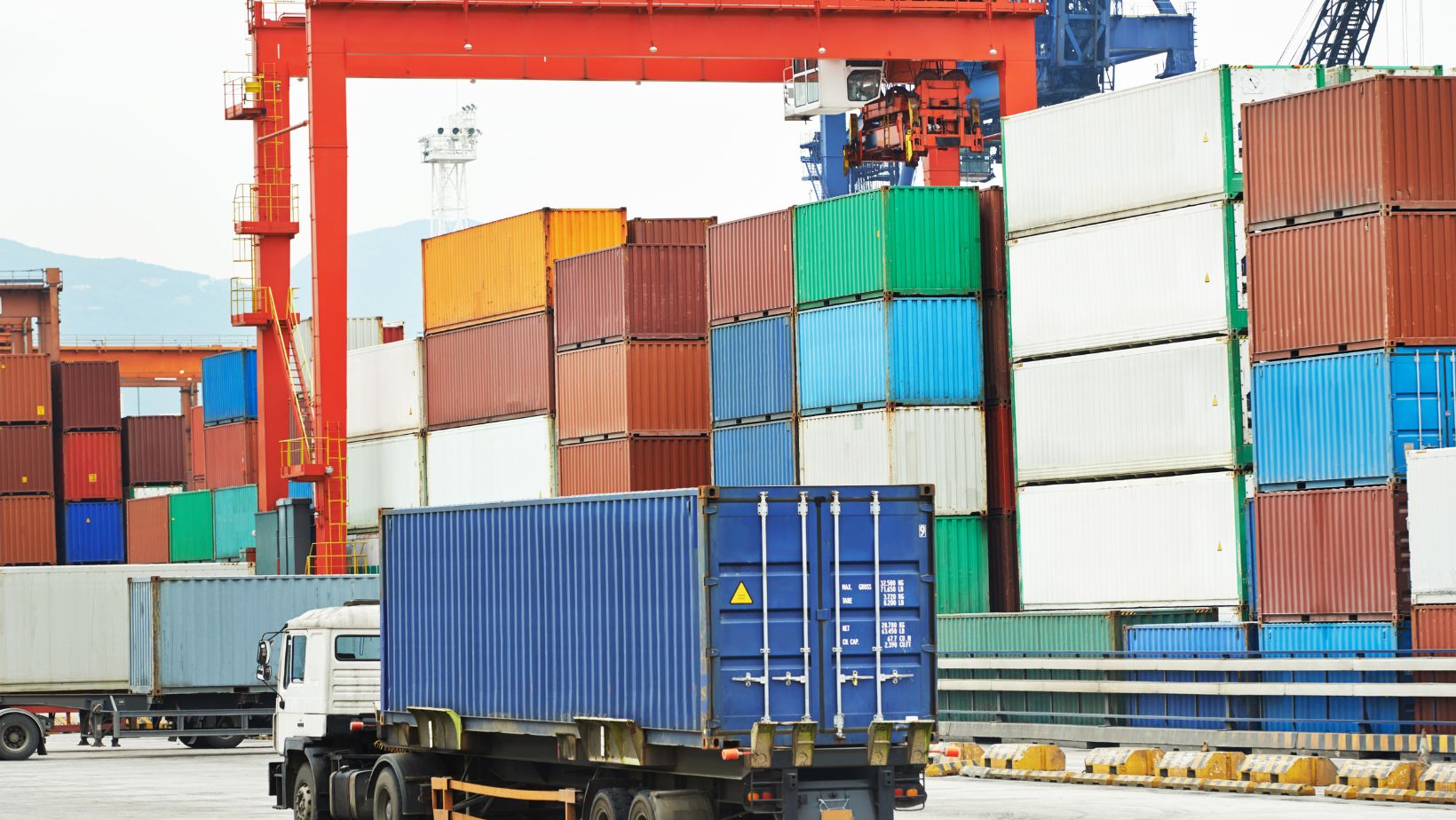In a world where distance is no longer a barrier, the realm of intermodal trucking stands as a vital link between continents, facilitating the seamless movement of goods across borders.
As you navigate through the intricacies of this interconnected web of transportation, you will uncover the intricate dance of modes that keep global commerce ticking.
Stay tuned as we unravel the layers of this complex system, shedding light on the impact it has on economies worldwide and the challenges that lie ahead in this ever-evolving landscape.
Evolution of Intermodal Trucking
As intermodal trucking emerged in the mid-20th century, it revolutionized the transportation industry by seamlessly integrating multiple modes of transport to enhance efficiency and connectivity. Intermodal innovations played a crucial role in the industry growth by allowing goods to be transported in standardized containers that could easily switch between trucks, trains, and ships without the need for unpacking and repacking. This streamlined process significantly reduced transit times and costs, making it a preferred choice for businesses looking to optimize their supply chains.
The introduction of specialized intermodal terminals further fueled the industry growth by providing dedicated facilities for transferring containers between different modes of transportation. These terminals were equipped with advanced handling equipment, such as cranes and forklifts, to ensure smooth and efficient transfers. Additionally, the development of sophisticated tracking systems allowed for real-time monitoring of shipments, enhancing visibility and control over the entire transportation process. Overall, these intermodal innovations paved the way for a more interconnected and efficient global logistics network.
Benefits of Intermodal Transportation
Intermodal transportation offers a myriad of advantages that optimize logistics operations and enhance supply chain efficiency. One key benefit is cost efficiency. By utilizing multiple modes of transportation seamlessly, intermodal trucking reduces overall transportation costs. It allows for the most cost-effective routes to be selected, leading to savings in fuel, labor, and maintenance expenses. Additionally, the ability to switch between different modes of transport, such as trucks, trains, and ships, helps in avoiding costly delays and optimizing delivery schedules.
Another significant advantage of intermodal transportation is its positive impact on environmental sustainability. By promoting the use of trains and ships for long hauls, intermodal trucking reduces carbon emissions and overall environmental footprint. This shift towards greener modes of transport aligns with global efforts to combat climate change and reduce pollution. Companies embracing intermodal transportation not only benefit from cost savings but also contribute to a more sustainable future for the planet.
Global Impact of Intermodal Trucking
With its extensive reach and interconnected networks, intermodal trucking revolutionizes global logistics by streamlining transportation processes across continents. The global impact of intermodal trucking is profound, contributing significantly to economic growth and environmental sustainability. By seamlessly integrating different modes of transportation such as trucks, trains, ships, and planes, intermodal trucking enhances efficiency, reduces transit times, and lowers overall costs, thereby boosting international trade and fostering economic development worldwide.
In terms of economic growth, intermodal trucking plays a vital role in facilitating the movement of goods between countries and regions. The streamlined process allows businesses to expand their markets, reach new customers, and engage in cross-border trade more effectively. This increased connectivity leads to job creation, improved infrastructure, and a more competitive global marketplace.
Furthermore, intermodal trucking promotes environmental sustainability by optimizing routes, reducing fuel consumption, and minimizing carbon emissions. By consolidating shipments and utilizing more fuel-efficient modes of transportation, intermodal trucking helps mitigate the environmental impact of logistics operations on a global scale. This focus on sustainability aligns with current efforts to combat climate change and create a greener future for generations to come.
Technology Advancements in Intermodal Trucking
Recent technological advancements in intermodal trucking have revolutionized the way goods are transported across different modes of transportation, enhancing efficiency and reducing transit times significantly. Automated dispatching systems have streamlined operations by optimizing routes and schedules, leading to faster deliveries and increased customer satisfaction. GPS tracking technology plays a crucial role in providing real-time visibility of shipments, enabling companies to monitor their cargo’s location and status throughout the journey.
Moreover, smart maintenance solutions have emerged as a game-changer in intermodal trucking. By leveraging predictive analytics, companies can now predict maintenance issues before they occur, reducing the risk of unexpected breakdowns and minimizing downtime. This proactive approach not only enhances fleet reliability but also lowers operating costs in the long run.
In essence, these technological innovations have propelled intermodal trucking into a new era of efficiency and reliability. Embracing these advancements can help businesses stay competitive in an increasingly fast-paced and interconnected global logistics landscape.
Challenges and Future Trends
Navigating the complexities of intermodal trucking presents a myriad of challenges and future trends that require careful consideration and strategic planning.
In the realm of intermodal trucking, staying ahead necessitates a keen awareness of both industry obstacles and future innovations. One of the primary challenges faced in intermodal trucking is the need for seamless coordination among different modes of transportation. From rail to road to sea, ensuring smooth transitions between these modes remains a critical hurdle.
Moreover, factors like varying regulations across regions and countries can pose significant challenges for intermodal trucking operations, requiring companies to adapt swiftly and efficiently.
Looking towards the future, innovations such as blockchain technology for transparent supply chain management and the integration of artificial intelligence for route optimization are poised to revolutionize the industry. Embracing these future trends will be essential for companies to stay competitive and meet the evolving demands of global logistics.
Conclusion
As you look at the interconnected web of intermodal trucking that spans continents, it’s clear that this mode of transportation is revolutionizing the way goods are moved around the world.
Just like a well-oiled machine, intermodal trucking seamlessly connects different modes of transportation to ensure efficiency and cost-effectiveness.
With technology advancements and global impact, this industry is poised for even greater growth and innovation in the future.
The world truly is at your fingertips with intermodal trucking.



